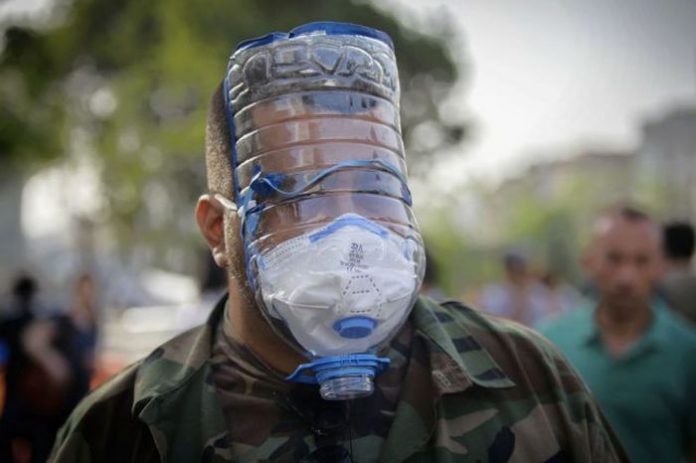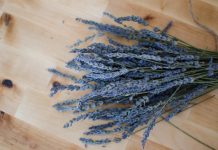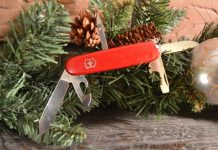It didn’t take long for the coronavirus to hit the world before medical mask sold out in the United States. I’m not sure they sold out before the first case arrived at an American hospital, but not long after that.
People bought masks as fast as they could to protect themselves from the deadly virus.
It wasn’t the first time I saw that happen. It happened during 2014’s Ebola outbreak. Pandemics are scary and easily cause panic. They don’t know what to do, so they do what they can. Purchasing surgical masks, hoping it would prevent them from catching the disease.
But what will you do if there are no more masks available? The first thing that happens is that people are running around buying any other mask they can find, hoping it will be good enough.
All the dust masks in all the hardware stores and lumberyards sell out as quickly as the medical masks.
What then?
Then nothing else to buy.
If you want a mask, you just have to make one yourself.
Related: How To Protect Your Home During This Pandemic
Build Parameters
The concept behind wearing a medical mask is to capture airborne germs; both viruses and bacteria. But that’s a bit of a misnomer, since there are very few illnesses that are actually airborne.
Rather, those diseases are spread abroad through what is known as “aerosol;” droplets of coughing and sneezing. These droplets fly up to 6 or 12 centimeters, depending on what scientific studies you believe in.
In either case they bring within themselves as disease-causing germs, some of which may be inhaled by others, spreading the disease.
The standard medical mask is made of three layers of material, with plastic being the outer layer, so water could not pass through it. The other two layers are absorbent.
The concept is that the absorbent fabrics will trap and absorb the spittle by the medical staff wearing it from any coughs or sneezes, not that their patients can protect the doctors and nurses from any coughs and sneezes.
Nonetheless, since the outer layer of these masks is made of waterproof material, they will protect their patients from spittle even if they will not absorb it.
So, the masks are an aid to prevent medical staff from contracting the disease.
The other common mask you’ve probably heard of is the N95 mask. Such masks are a mask in the shape of a hard cup, with a smooth strip of aluminum formed over the nose.
These are intended to protect the wearer, as they filter incoming air, unlike standard medical masks. With the aluminum belt, molding the mask to the nose helps to ensure that no disease-laden droplets get around the mask and into the wearer’s nose or mouth.
The N95 rating actually means that the mask is expected to stop 95% of particulate matter; in other words, dust. Since this mask’s outer layer is absorbent material, however, it can trap spittle droplets too.
So whatever we come up with must be capable both of filtering our particles and of absorbing spittle. The mask also needs to seal around the nose and mouth, preventing any stray droplets from getting around the edges and contaminating us.
Here is what I have come up with.
The Homemade Pandemic Mask
I decided to restrict myself to usable resources, even in the midst of a pandemic. I’m assuming people can get to the grocery store and hardware store, although doing so is a risk.
Yet the materials must be readily accessible, so people don’t have to search for them.
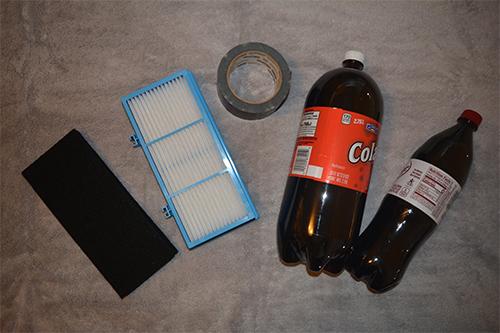

The basic materials consist of:
- 3-liter soda bottle
- 1-liter soda or water bottle
- HEPA filters – such as are used in vacuum cleaners and home air purifiers
- Carbon filter
- Duct tape
- Elastic (not shown)
- Epoxy (not shown)
Building the Mask
I decided the mask itself needed to cover all face openings, including eyes, nose, and mouth. During extreme infectious cases , medical personnel wear full-face gloves or goggles to protect them from the germ-rich spittle droplets. When we want to defend ourselves from a pandemic, it makes sense to do the same. Therefore, the 3-liter soda bottle.
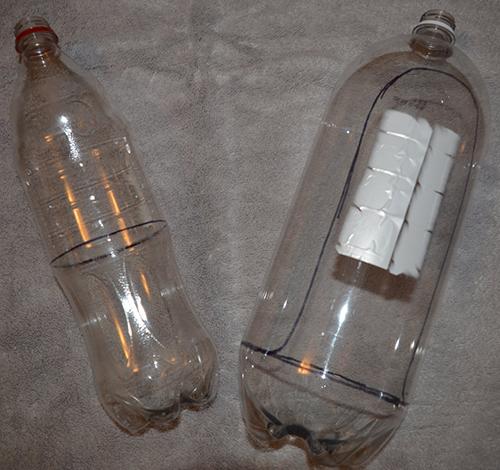

I started by emptying the bottles, rinsing them, removing their labels and drawing the lines where I’d cut them. The 3-liter bottle is the face mask and the 1-liter bottle is the filter.
I’ll connect the two together with a two-cap coupling.
There’s no precise bottle measurements. I figured that the opening width in the larger container, and particularly the curve line near the top, must suit the wearer’s chin curvature.
Cutting these bottles is easy; it can be done with a hobby or utility knife. However, I found that it was easier to cut them, once I made an initial slit, with a small pair of scissors, something like those used for cutting hair.
Those I used were slightly compressed, but I don’t think that made any difference.
Later, I chose to use the 1-liter soda bottle as well as a filter baffle. So, while the picture above shows no line, I cut the bottom off the bottle and saved it.
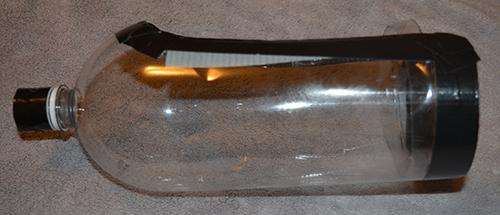

When I cut the outline in the 3-liter bottle, I lined the edges with duct tape to make it less scratchy. And then punched holes in it and put the elastic through the holes to hold the mask to my mouth.
Related: 5 Easy Steps to Decontaminate Yourself at Home
Building the Coupling
The design concept I have uses two bottles; a large mask and a smaller one for the filter. Obviously, these two must be combined to make the mask work. Fortunately, bottle caps made coupling very convenient.
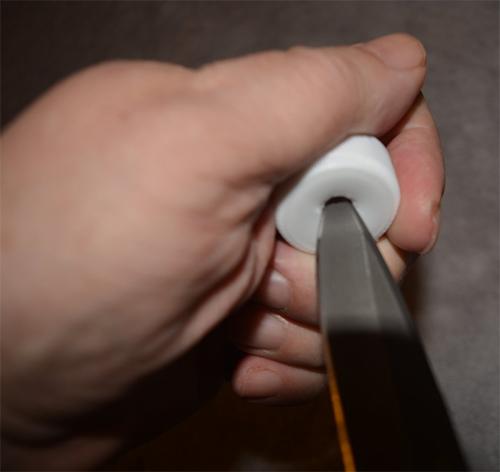

First, I needed holes in the caps. I took my pocket knife and used it as a drill, making about 1⁄2-inch holes in both caps. If you have a drill, that will make it much easier for you to do the holes.
Be careful not to use too much knife pressure because you can poke through and cut your palm. The cap material is soft and easily cuts, even when trying to drill it this way.
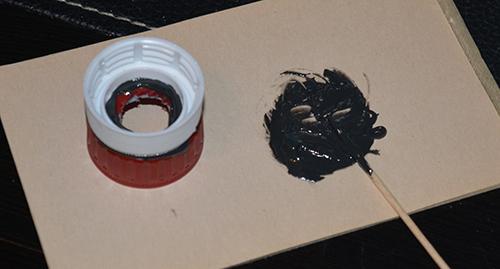

For coupling, all caps must be glued together. For this, I went to my go-to-glue, fast-drying epoxy. Epoxy is strong and can be used for anything. In this case, t he bottle caps are possibly polyethylene, which doesn’t hold well.
I roughed the surface with some 100-grit sandpaper, giving something to grip the epoxy.
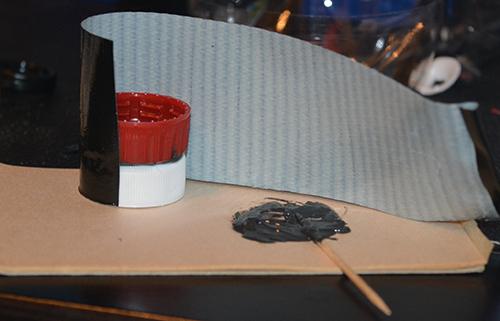

To help ensure the strength of the coupling, I wrapped it in a duct tape, getting a few revolutions around the entire coupling. Then I cut the flush tape with the ends of the coupling. If needed, the duct tape is strong enough to hold the coupling together, providing an airtight seal, even if the epoxy can not remain bonded to plastic caps.
Create a Filter
This left me in need to make a filter. I decided to use a two-stage filter for extra security. The first layer, which will be in the smaller bottle and to which can be replaced, is a HEPA filter.
The HEPA (high-efficiency particulate absorbing) standard was developed for air filtration equipment. This must be able to extract 99.97% of all 0.3 micron particles.
This specification makes the HEPA filter approximately the equivalent of the N95 mask filter. Personally, I think it’s a little better; but I won’t guarantee it because the specifications are written in such a way that it’s like comparing apples and oranges.
The language is not the same in both specifications.
Nevertheless, besides particulate matter, a HEPA filter should be able to remove most bacteria and viruses, so it’s ideal for our purposes.
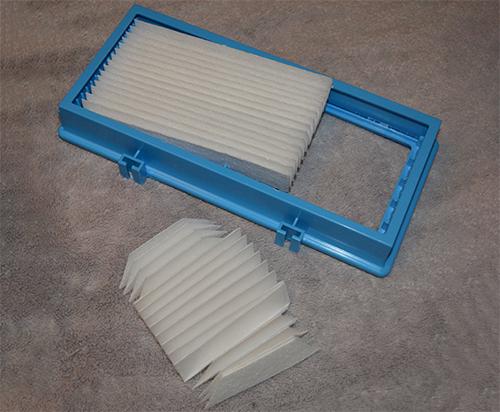

The HEPA filters I bought are actually designed for home air cleaning. I could easily have used one for a vacuum cleaner, but it was readily available and fairly priced. By buying them online, I saved myself a shop trip.
As you can see from the picture above, the filter itself is folded into a plastic housing that keeps it that way. Since the housing doesn’t match the shape I need, I just removed the filter medium and cut a section the right size to fit in my bottle. Let me stress – you can use any HEPA filter you can find; you don’t need the same filter I used.
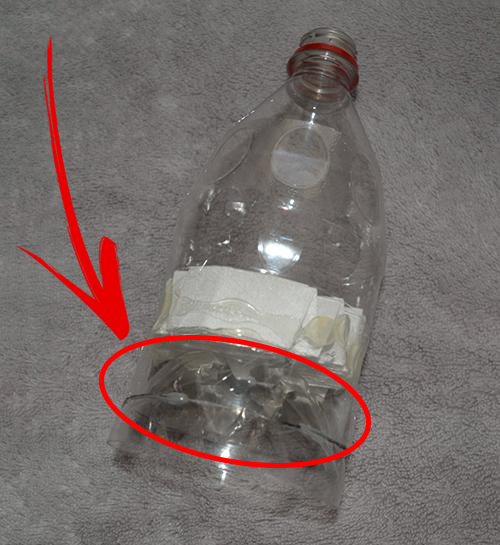

To make my filter unit, all I did was to hot melt glue that accordion-folded filter into the 1-liter bottle. That was a little tricky, because it was hard to get the glue gun to work in the jar.
But it’s important that the filter is fixed all around and there are no spaces where air can pass through without flowing through the filter. You better use too much glue than not enough.
Then, I took the rim of the bottle and flipped it to my filter unit ‘s bottom. It’s hard to see in the photo above, but the arrow points to a plastic gap where the bottle base was indented.
There are five of these gaps between the base and the bottle’s top as installed, giving plenty of room for air to get in.
The idea behind installing the base like this is to act as a baffle, keeping aerosol droplets from entering the filter unit, and hitting the filter medium. While it’s still possible for droplets to get in, I felt it was best to make it as difficult as possible, so my filter wouldn’t get clogged from damp spittle.
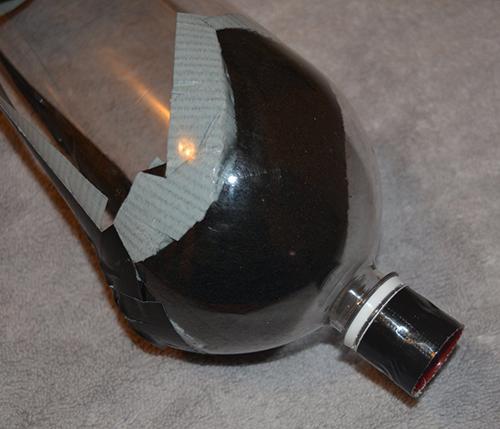

I added a second filtration layer, taping a double layer of activated carbon filter into the mask’s bottom with duct tape. This is a backup to the other filter, should anything happen.
Activated carbon has been used in many filter forms designed to trap microscopic pathogens of the kind we are trying to protect ourselves from.
Related: 30 Supplies for Pandemic Survival
Using the Mask
The coupling screws both bottles together in order to use the mask. Then your chin is the curve of the cutout in the mask, raising the mask to your nose, pressing the top against your forehead.
Slip the elastic band around your head in place.
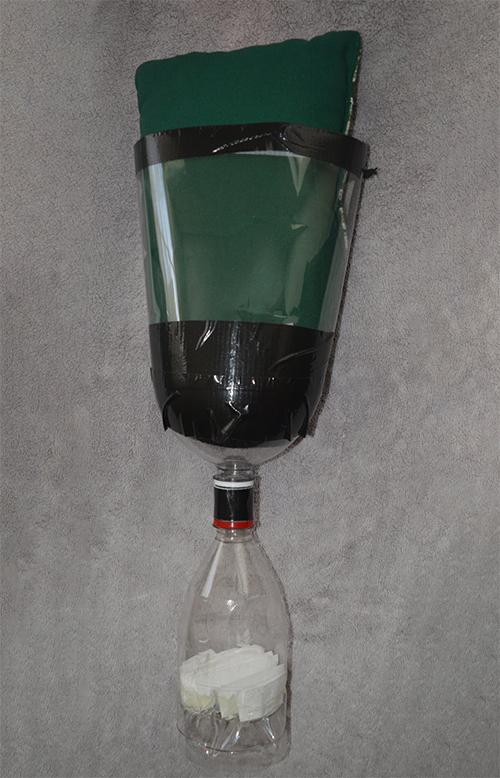

One of the good things about this design is you can change your filter element as needed. You can make one mask and multiple filters, changing as needed.
This should be every eight hours at the most . When the filter gets clogged, clean it more often.



